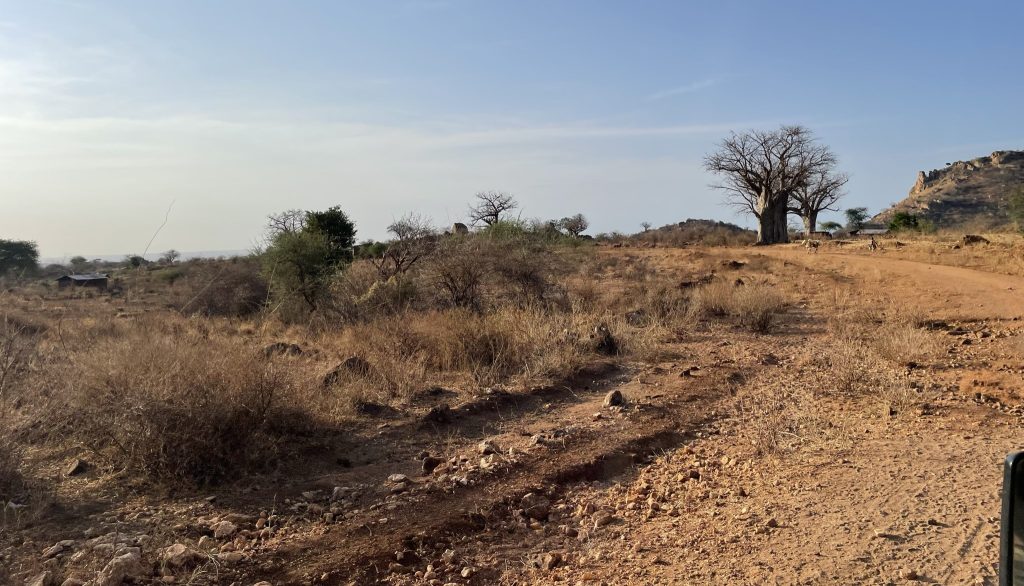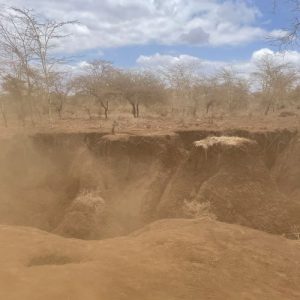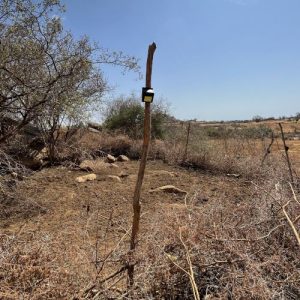Is it possible to live with climate change?
Our Head of Conservation, Dr Nikki Tagg, reflects on the impact the changing climate will have on the lives of people across Kenya.

The effects of the changing climate will be profound for us all and globally we must focus our efforts to turn the tide. However, in Kenya, the impacts of ‘climate breakdown’ – very serious and harmful changes in the world’s weather – are already evident, and predicted to get much worse. We need to invest in solutions to empower people to continue to thrive in these increasingly challenging landscapes. Born Free’s Head of Conservation Dr Nikki Tagg explores the impact the changing climate is having in this region and considers how we might need to adapt the solutions Born Free is already implementing to help ease the impact on people and wildlife.
Most of us are extremely concerned about the impact climate breakdown will have on our lives in the future. Yet in many parts of the world, it is no longer an issue for the future: it is happening now. Many landscapes, often in developing countries, are already experiencing irreversible changes and people’s livelihoods are being affected. Is it possible to live with climate change?
During a recent visit to our programmes in Kenya, I was privileged to travel across the Amboseli and Meru ecosystems, observing the landscapes and speaking to community members. Born Free has undertaken our own projects in Amboseli since 2010 and in Meru since 2014, empowering people to reduce and mitigate conflict with wild animals, including lions and elephants, and securing habitat for large herbivores such as giraffe.
Challenging Landscapes

Deep gully cut into the road by soil erosion to the south of Amboseli National Park
Both landscapes are vast and the issues complex. The changing climate is already exacerbating many of the challenges experienced by people living in these landscapes. To the south of Amboseli National Park, in the foothills of Mount Kilimanjaro, there has been extreme degradation of vegetation and soil. When it rains, water rushes down the mountain slopes and cuts dangerously deep gullies into the roads making it onerous for people to move about. It also erodes farmland meaning nothing can grow. In the north of the Amboseli landscape, grazing lands have been overrun by invasive species, such as Ipomea and Prosopis, that thrive in harsh, degraded environments, preventing grasses that are palatable to animals from growing and posing a huge problem for livestock and wildlife alike.
Permanent swamps and seasonal lakes blanket the national park; yet, throughout the surrounding 5,500km2 of heavily settled group ranches that constitute the wider Amboseli landscape, accessibility to water is a huge problem every day. Community troughs and water pans lie empty, boreholes fail to pump, and people may have to walk for hours in search of water. This leads to competition between livestock and wildlife for scant water and grazing resources, if they can be found, often resulting in deaths of both. A loss of natural prey species in this way results in an increase in depredation on livestock as lions and other carnivores struggle to survive.
Our road trip then took us further north in Kenya, to the 870km2 Meru National Park. This park is comparatively lush, being fed by several permanent and seasonal rivers; but, similarly to Amboseli, outside of this central oasis it is a very different picture. For the communities living to the south of the park, for example, the climate is incredibly dry, vegetation sparse, and soils dusty. People here are agropastoralists, meaning that they keep small herds of livestock but also farm a few hectares of land. With both these activities being heavily dependent on natural resources, the changing climate is making things very difficult for them. The reduced and unpredictable rains in recent years often leads to crop failures and, in desperation, people might turn to bushmeat hunting via illegal snaring both inside and outside the national park, to provide sustenance and an income for their families.
Rivers are increasingly dry for more months of the year, so crops and natural vegetation cannot grow and people and wildlife struggle to get the resources they need. As I accompanied the team around this landscape I was struck by the complete absence of wild herbivores. This means that for carnivores like lions and hyenas persisting in the Gikingo Hills south of Meru and moving through the wider landscape in search of prey, livestock often become a target and people’s livelihoods further suffer.
Simple Solutions
Livestock depredation in these two landscapes, exacerbated by the impacts of the changing climate, is a huge burden for pastoralist families who are already living on finely balanced economies and rely heavily on their livestock assets. Such human-carnivore conflict is a massive obstacle to harmonious coexistence with carnivores, and lions are at risk of retaliatory persecution.

Predator-deterrent light installed around a boma in Meru.
Though the issues are complex, often the solutions we can offer are somewhat simple. Enhanced security of livestock overnight – either by reinforcing traditional livestock corrals into ‘predator-proof bomas’, or by installing predator-deterrent flashing lights around bomas – have been welcomed by communities and many more families are requesting help to acquire and learn how to use such conflict mitigation tools. Adopting these techniques can translate into an easier and stress-free way of life for pastoralist farmers, who no longer need to sleep outside their livestock enclosures for fear of attack.
Awareness is also a simple yet critical solution – simple behavioural adaptations, can help people coexist with the native wildlife, such as bringing dogs along when grazing cattle during the day to alert to the presence of carnivores. An enhanced understanding of the essential role of wildlife, in particular apex predators like lions, in maintaining and regenerating the natural ecosystems that sustain people’s ways of life, are essential to help encourage empathy and promote harmonious coexistence. We hold various community engagement events, using a myriad of tools ranging from training to sport, and from group discussions to comedy, to transmit conservation messaging and help empower people to find the solutions they need.
These simple methods are effective, and with the support of our partners, we have bold plans to expand and roll out such solutions across the landscapes.
Just the Beginning
But we must be aware that what rural people living with climate change in the Amboseli and Meru ecosystems are experiencing is just the beginning. Global climate breakdown is taking hold and drastically effecting landscapes and people’s lives across the world much more quickly than expected and things are likely to get much worse.
It is predicted that temperatures will increase by between 1.26 and over 2°C by 2050 depending on the ‘carbon emissions scenario’, that is, (ie, how much carbon dioxide we continue to pump into the atmosphere). The Amboseli plains are a projected climate hotspot and are therefore likely to suffer intensely. Over the last 25 years, temperatures have increased in Amboseli, whilst at the same time rainfall has decreased. These changes mean there is greater heat and water stress across the landscape – it is suggested that there are now at least 50 extra days of water stress in a year. Although the current climate models predict a slight increase in rainfall over the next 60 years, rapid changes in conditions recently are triggering an urgent re-calculation of these models.
In Meru, rainfall has also decreased over the years inside the national park to only a third of the amount that fell in 1990, and temperatures have increased by between 0.5 and 1°C. Over the next 40 years, it is predicted that prolonged water stress due to droughts will increase, with a 50% increase in number of consecutive days of water stress in the first wet season of the year alone.
Although it is very difficult to predict what will happen and when in these landscapes, or what exactly it will mean for the day-to-day lives of the people living here, we can be sure that conditions in these already dry and challenging landscapes are going to get more difficult for people and wildlife alike. In areas where carnivores continue to persist, we will expect human-carnivore conflict to be heightened as climate breakdown takes hold and life becomes yet harder for everyone. Farming and livestock-keeping in landscapes ravaged with drought and floods may well eventually become unfeasible, meaning that whole communities may need to change their traditional ways of life.
The Need to Adapt
But one thing we can predict is that, as the issues change and intensify, we will also adapt the solutions we bring. From meeting community members during my recent visit to Amboseli and Meru, it is clear that in order to help people live in this dramatically changing climate, we need to be thinking about water, about soil, and about grass and trees. We must try to restore degraded lands on which crops need to grow, and to hold the rain – when it comes – for long enough to see people and wildlife through the dry season.
And crucially, we need to protect wildlife. Restored grazing lands means herbivores may bounce back, providing carnivores with their natural prey and reducing the risk of livestock depredation. Wildlife plays a critical role in mitigating the effects of climate breakdown and preventing the worst outcomes, by maintaining the balance and function of natural ecosystems. This will give us a fighting chance, with the ongoing support of our partners, at preserving these precious landscapes that so many people call home.
